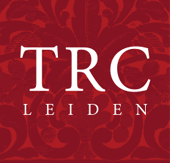Caps, hats, bonnets, shawls, dresses, cloaks and capes, coats, jackets, skirts and trousers have all been made in velvet. Some garments, such as the 10 m long velvet skirts worn by Kurdish women in eastern Iran are extremely heavy, while other forms, such as knitted velours, are very light in comparison.
It is noticeable that the types of velvets intended for clothing have changed dramatically over the centuries and across the world. When people (men, women and children) in Europe, for instance, wore velvet garments in the Renaissance period, these tended to be heavy, difficult to drape and decorated with large designs. The garments were intended to show off the designs and the expense involved in making and wearing such fabrics.
By that time, military garments and accessories were also made from velvet, such as royal surcoats worn at tournaments, etc. Velvet was also used to cover plate armour and, of course, it was applied for animal trappings and saddlecloths, as well as for reins, saddles and stirrups.
By the mid-16th century, there was a general movement towards the use of lighter, cut and uncut pile velvets with a satin ground and decorated with small designs. The garments could be shaped into more fashionable forms of clothing. These velvets became very popular, especially for women’s dresses and men’s jackets.
 Young boy wearing velvet jacket and trousers (England; 1880's; TRC 2018.3394).By the 19th century, a wide range of garments was still made from velvet, and these included various items, ranging from hats to shoes, literally from head to foot. Some of the most elaborate uses of velvet can be seen in the garments worn at coronations and royal marriages. The velvet used for the coronation of the French Emperor Napoleon and his wife Josephine de Beauharnais in 1804, for example, included vast quantities of velvet for their embroidered cloaks and trains.
Young boy wearing velvet jacket and trousers (England; 1880's; TRC 2018.3394).By the 19th century, a wide range of garments was still made from velvet, and these included various items, ranging from hats to shoes, literally from head to foot. Some of the most elaborate uses of velvet can be seen in the garments worn at coronations and royal marriages. The velvet used for the coronation of the French Emperor Napoleon and his wife Josephine de Beauharnais in 1804, for example, included vast quantities of velvet for their embroidered cloaks and trains.
Smaller quantities of velvet were used by ‘ordinary’ people, especially from the mid-19th century onwards, when velvet had become comparatively easy and much cheaper to produce.
The popularity of velvet declined during and after the Second World War (1939-1945) and the austerity that went with it. This changed in the 1960’s and 1970’s, when it was worn by men and women associated with the hippy tradition and the bohemian way of life.
The use of stretch velvet for indoor training outfits (tops and trousers) is regarded by some as the lowest of the low point for a once royal fabric. Perhaps it is time for a revival of Velvet!

